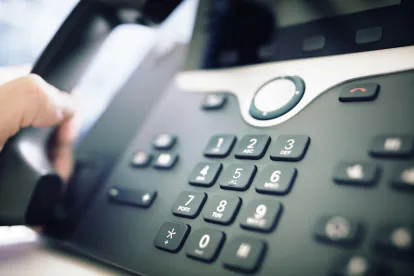On July 29, 2020, the Sixth Circuit joined the Second and the Ninth Circuits in expansively defining Automatic Telephone Dialing System (“ATDS”) under the Telephone Consumer Protection Act (“TCPA”). In Allan v. Pa. Higher Educ. Assistance Agency, No. 19-2043 (6th Cir. July 29, 2020), the Sixth Circuit held that “devices that dial from a stored list of numbers”—i.e. “predictive dialers”—qualify as an ATDS under the TCPA. The Third, Seventh, and Eleventh Circuits have applied a more stringent definition, requiring that an ATDS have the capacity to generate random or sequential telephone numbers and to dial them. Now the Circuit Courts are split on this issue 3-3. The U.S. Supreme Court recently accepted review of the definition of ATDS and will presumably resolve this split in its next terms, likely by the spring of 2021.
In Allan, the plaintiffs alleged they received automated student loan debt collection calls in violation of the TCPA. The plaintiffs argued that the dialing device was an ATDS even though it dialed from a stored list of customers and did not randomly or sequentially generate numbers to be dialed. The Sixth Circuit acknowledged the Circuit split on this issue and noted that it could not look to the Federal Communications Commission (“FCC”) for guidance since the D.C. Circuit in ACA International v. FCC, 885 F.3d 687 (D.C. Cir. 2018) invalidated the FCC’s 2015 interpretation of ATDS and the FCC has not yet redefined ATDS.
The FCC had allowed two competing interpretations of ATDS: “(1) a device qualifies as an ATDS ‘only if it can generate random or sequential numbers to be dialed’ and (2) a device qualifies as an ATDS ‘even if it lacks that capacity’ to generate numbers.” But the D.C. Circuit ruled that the FCC could not “espouse both competing interpretations” of ATDS. Thus, the Sixth Circuit found that it was fair game to side with either interpretation.
The Sixth Circuit first looked to the statutory definition of ATDS, which defines ATDS as “equipment which has the capacity—(A) to store or produce telephone numbers to be called, using a random or sequential number generator; and (B) to dial such numbers.” 47 U.S.C. § 227(a)(1). The court acknowledged that under first interpretation, the system at issue “would not qualify as an ATDS because it does not store numbers by using a random or sequential number generator.” However, the Sixth Circuit found that the first interpretation required a “strained reading of ‘store’” and rendered “store” superfluous.
The Sixth Circuit also found that the second interpretation – which would allow a device to qualify as an ATDS based on its capacity to store numbers and dial them – had its own problems. In particular, the second interpretation “requires adding the phrase ‘telephone numbers to be called’ after ‘store’ for it to make grammatical sense.” Although the Sixth Circuit acknowledged that this was a “significant modification[,]” it ultimately sided with the Ninth and Second Circuits in following this interpretation based on the “context of the autodialer ban as a whole.”
What does this mean? Early in July 2020, the U.S. Supreme Court accepted review of the Ninth Circuit’s broad interpretation of ATDS Facebook, Inc. v. Duguid et al. At that time, the majority of Circuits had favored the more narrow interpretation of ATDS, but this new ruling from the Sixth Circuit has leveled the playing field, creating an even split. Given that the U.S. Supreme Court is currently considering the issue, many pending TCPA class actions will likely be stayed pending the Supreme Court’s decision.




 />i
/>i

